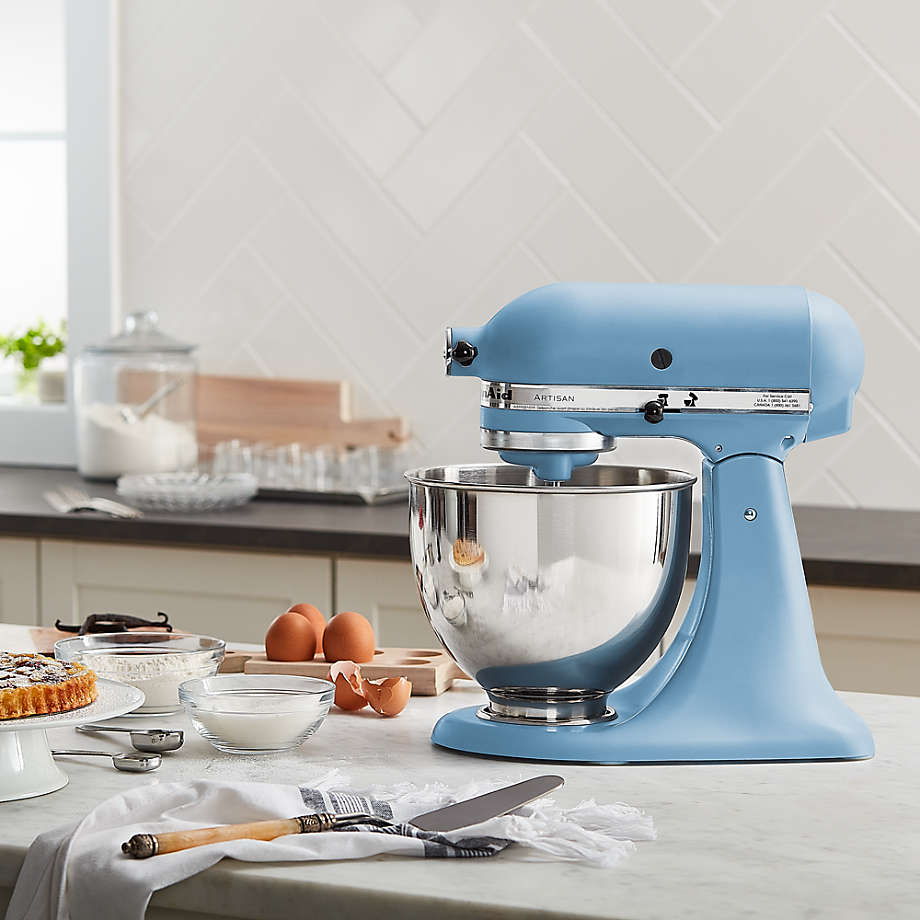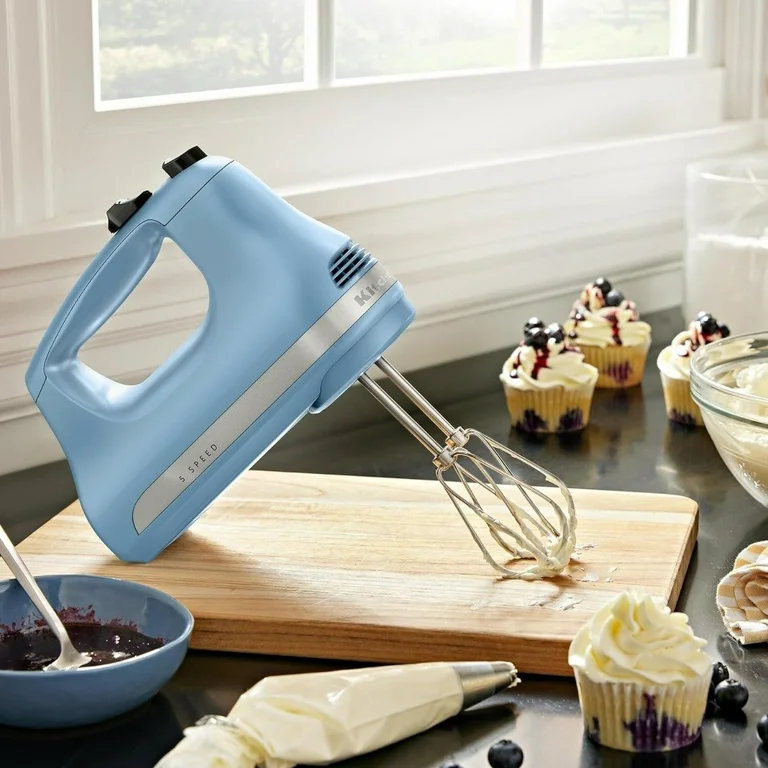Ever been in the middle of whipping up the perfect meringue for a lemon pie, only to have your trusty hand mixer sputter, whine, and give up the ghost? It’s a baker’s nightmare. You’re left with a bowl of half-whipped egg whites and a crucial question: How Long Do Hand Mixers Last, really? As someone who has tested, taken apart, and pushed these kitchen workhorses to their limits, I’m here to give you the straight scoop.
The truth is, there isn’t a single, one-size-fits-all answer. A hand mixer’s lifespan is a cocktail of brand quality, how you use it, and a little bit of TLC. Let’s dive in and demystify the lifespan of your favorite baking sidekick.
The Average Lifespan: What Can You Realistically Expect?
So, what’s the bottom line? A decent quality, well-cared-for hand mixer should last you anywhere from 5 to 10 years of regular home use. However, this range can swing wildly. A budget-friendly, entry-level model might only survive 2-3 years if you’re an avid baker, while a premium, robust model could still be whipping cream for your grandkids over a decade from now.
Think of it like a car. A high-performance vehicle will last longer with regular maintenance than a cheap runabout that’s constantly red-lined. The same principle applies to the motor humming away inside your hand mixer.
Key Factors That Determine How Long Your Hand Mixer Will Last
It’s not just about luck; several concrete factors dictate whether your mixer will become a long-term companion or a short-term fling.
The Heart of the Machine: Motor Quality and Power
The motor is everything. Most hand mixers use one of two types:
- AC (Alternating Current) Motors: These are common in less expensive models. They get the job done for light tasks like whipping cream or cake batter, but they can struggle and overheat with thicker mixtures like cookie dough.
- DC (Direct Current) Motors: Generally found in higher-end models, DC motors are a game-changer. They are quieter, more powerful, and offer better torque at lower speeds. This means they don’t have to work as hard to mix dense dough, leading to significantly less strain and a much longer life.
A higher wattage can be an indicator of a more powerful motor, but the type of motor is often more important. A well-engineered 200-watt DC motor will almost always outperform and outlast a poorly made 400-watt AC motor.
Build Quality and Materials
What’s on the outside matters, too. A mixer housed in cheap, brittle plastic is more prone to cracks and damage than one with a sturdy, high-grade plastic or partial metal body. The same goes for the attachments. Flimsy, thin beaters can bend or break when faced with a stiff butter and sugar mixture, rendering the whole unit useless.
Your Baking Habits
Are you an occasional holiday cookie baker or a weekly sourdough enthusiast? How you use your mixer is perhaps the biggest factor you control.
- Frequency of Use: Obviously, a mixer used three times a week will wear out faster than one used once a month.
- Task Difficulty: Consistently pushing your mixer to its limits with heavy bread doughs or large batches of stiff cookie dough will drastically shorten its life, especially if it has a weaker AC motor.
- Session Length: Running a mixer continuously for long periods can cause it to overheat, which is the number one enemy of electric motors.
“Many home bakers burn out their hand mixers by treating them like stand mixers. A hand mixer is designed for shorter, lighter tasks. For dense bread dough, always give the motor a rest or use a machine built for that kind of heavy lifting.” – Pastry Chef David Carter
Is Your Hand Mixer on Its Last Legs? Telltale Signs
Your mixer will usually give you a few warning signs before it completely kicks the bucket. Keep an eye (and an ear) out for these red flags:
- A Burning Smell: This is the most serious sign. It means the motor is overheating and likely damaging its internal components. Unplug it immediately and let it cool down completely.
- Strange Noises: Grinding, rattling, or high-pitched whining noises that you’ve never heard before are bad news. It could indicate a failing gear or a loose part inside.
- Inconsistent Speeds: If you set the mixer to level 3 but it seems to be sputtering or randomly jumping between speeds, the motor or the speed control switch is failing.
- Excessive Heat: It’s normal for a mixer to get warm, but if the casing becomes too hot to comfortably touch, the motor is being overworked and is on the path to failure.
- Beaters Won’t Stay In: If the beaters keep falling out, the ejection mechanism or the sockets themselves are worn out.
Pro Tips to Make Your Hand Mixer Last Longer
Want to squeeze every last drop of life out of your device? Follow these simple rules. I’ve used these tricks to keep some of my favorite mixers running for years beyond their expected lifespan.
- Start Slow, Finish Fast: Always start mixing on the lowest speed to combine ingredients before ramping up. This prevents flour explosions and, more importantly, reduces the initial jarring strain on the motor.
- Know Its Limits: Read the manual! Don’t use your lightweight hand mixer to knead heavy bread dough. It’s a recipe for a burned-out motor. For thick cookie doughs, bring butter and cream cheese to room temperature first to make them easier to mix.
- Take Breaks: When mixing heavy batters for more than a couple of minutes, give your mixer a 30-second rest. This allows the motor to cool down and prevents overheating.
- Clean with Care: Never submerge the main body of the mixer in water. Wipe it down with a damp cloth. Wash the beaters and attachments immediately after use to prevent ingredients from hardening, which puts more strain on the ejector mechanism.
- Store It Properly: Don’t just shove it in a drawer where the cord can get tangled and frayed. Many mixers come with a storage case for a reason. Wind the cord loosely and store the mixer and its attachments together in a safe, dry place.
Investing in a Long-Lasting Hand Mixer: What to Look For
When the time finally comes to buy a new one, you want to invest in a model that will go the distance. Here’s a quick checklist of what to look for to get the best return on your investment.
- Motor Type: Prioritize a mixer with a DC motor if your budget allows. It’s the single best indicator of longevity and performance.
- Reputable Brands: Brands like KitchenAid, Cuisinart, Breville, and Braun have a long-standing reputation for quality and durable motors.
- Solid Construction: Hold it in your hand. Does it feel solid or flimsy? Check for a sturdy casing and high-quality stainless steel beaters.
- Slow Start Feature: This feature gently ramps up the speed, preventing splatters and reducing initial motor strain.
- Good Warranty: A longer warranty (2 years or more) shows that the manufacturer has confidence in its product’s durability.
Frequently Asked Questions
What is the average lifespan of a hand mixer?
The average hand mixer lasts between 5 and 10 years with moderate home use. This can vary greatly depending on the brand’s quality, the types of tasks it’s used for, and how well it is maintained.
Can I use a hand mixer for thick dough like bread dough?
It’s generally not recommended. Most hand mixers, especially those with AC motors, are not designed for the heavy, continuous strain of kneading bread dough. Doing so can cause the motor to overheat and fail prematurely. Always check your user manual for specific limitations.
Why does my hand mixer smell like it’s burning?
A burning smell is a critical warning sign that the motor is overheating. This can be caused by overworking the mixer with a task that’s too difficult, running it for too long without a break, or an internal electrical fault. Stop using it immediately.
Is a more expensive hand mixer guaranteed to last longer?
While not a guarantee, a higher price often correlates with better components, like a more durable DC motor, higher-quality materials, and better engineering. These factors contribute significantly to a longer lifespan, making the investment worthwhile for frequent bakers.
How do I know if my hand mixer’s motor is powerful enough?
Look for mixers with a DC motor, as they provide better torque and efficiency. While wattage can be a guide, a 200-250 watt mixer from a reputable brand with a DC motor is often more powerful and durable than a 400-watt mixer with a basic AC motor.
The Final Whisk
So, how long do hand mixers last? The power is largely in your hands. By choosing a quality model and treating it with a bit of mechanical empathy—avoiding tasks it wasn’t built for and keeping it clean—you can ensure your kitchen companion is there for countless cakes, cookies, and creams to come. A good hand mixer isn’t just an appliance; it’s a partner in your culinary adventures. Choose wisely, care for it well, and it will serve you faithfully for years.
